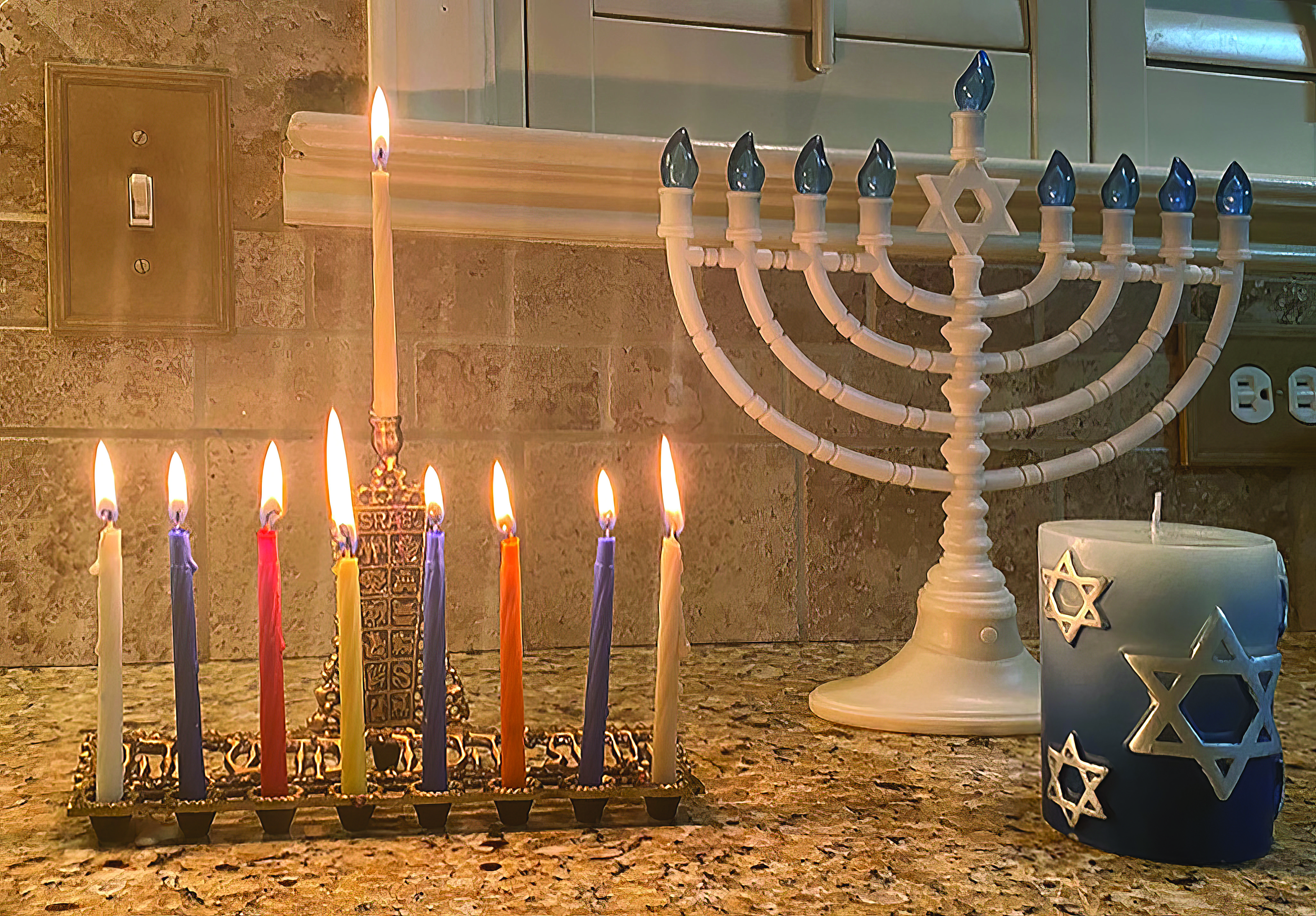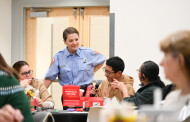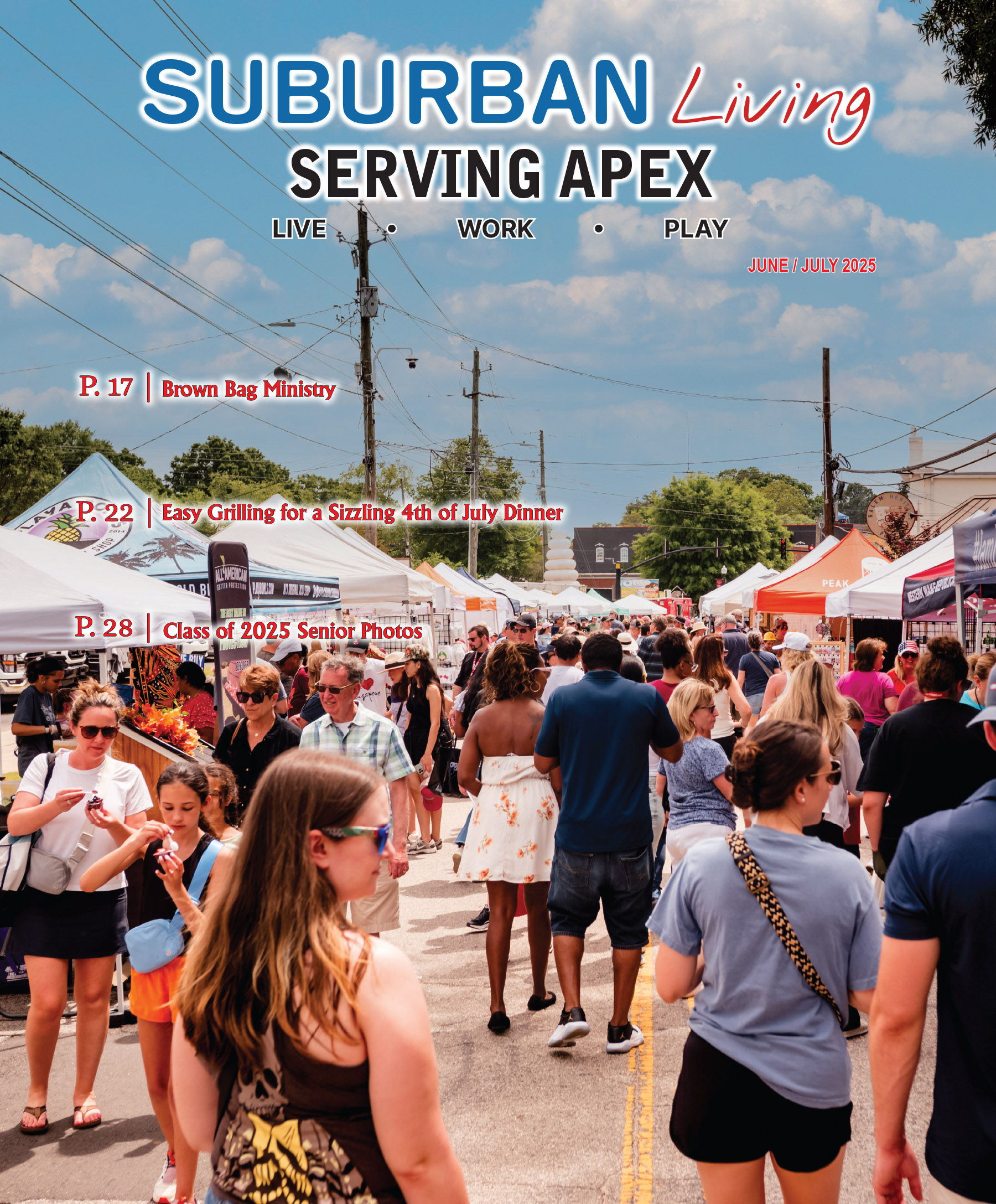Most of us are familiar with how the masses celebrate Christmas. Fewer are familiar with other holidays and observances that are celebrated during this busy season that runs from November through January. Let’s take a look at the origins and traditions of not only Christmas, but some of our other winter holidays.
Christmas
Christmas is a Christian holiday celebrated on December 25 that commemorates the birth of Jesus Christ. Literally, the word Christmas means the mass (celebration) of Christ (Christ is the Hebrew word for Messiah). Although Christmas has become highly commercialized, Christians still find meaning in many of the traditions of the season.
Gift giving at Christmas is a reminder of the gifts the wise men brought to Jesus at his birth. It is also a reminder of Christ’s gift to humanity, the gift of new life and salvation. Many not only give gifts to family and friends, but to the poor and those in need. Santa Claus, a merry Christmas icon whose generosity is demonstrated through giving presents, originated with Saint Nicholas, who, in fact, gave gifts to the poor.
The tradition of decorating a Christmas tree has become part of the celebration and has symbolic meaning related to the Christmas story. The Christmas tree is an evergreen, which symbolizes everlasting life. The star or angel placed at the top of the tree represents the star that led the wise men to Jesus at his birth or the angel that spoke to Mary about the birth of Jesus. The lights on the tree represent Christ as the light of the world.
During the Christmas season, people embellish their homes with elaborate light displays and all manner of holiday decorations, sing Christmas carols, send Christmas greetings, attend Christmas parties, watch Christmas parades, celebrate with family and friends, exchange gifts, recount the Christmas story, and attend church. For Christians, Christmas is a reminder of God’s goodness and His compassion and love for mankind.
Local writer Christian Freed celebrates Christmas with a Latin American twist, thanks to his wife’s Cuban roots.
“Noche Buena is the traditional celebration of Christmas Eve. Families gather. The old men spend the day in the back cooking the pig while the children play. Domino tables are running, and the smell of hand-rolled cigars drifts across the yard. Music and laughter embolden the dourest spirits. It is a time of reflection in anticipation of Christmas. After the sun goes down, and the house is filled with the sweet smells of black beans and rice, yucca, sweet potato souffle, fresh Cuban bread, and more, stomachs start growling. But there is no eating. At least not right away. The clock ticks closer to midnight before all but the very young and a few select adults pile into their cars and head off to attend midnight mass. Filled with the power of the Holy Spirit as the clock strikes Christmas Day, everyone returns home and settles in for a long-anticipated feast. I, for one, had never imagined such an experience but after twenty years of being married into my wife’s Cuban family, I can’t imagine a time without it.”
Chanukah
Chanukah is a Jewish holiday, often referred to as the “Festival of Lights.” Chanukah is celebrated for eight days and nights, starting on the 25th of the Jewish month of Kislev, which this year falls on December 18-26 on the secular calendar.
This festive, eight-day celebration commemorates the rededication during the second century B.C.E. of the Second Temple in Jerusalem, where Jews, under the leadership of Judah Maccabee, had risen up against their oppressors in the Maccabean Revolt. There was much work to do to bring the Temple back from the desecration and rampage exacted on it. This rededication of the Temple would not be complete without the lighting of the grand, golden Menorah. But there was no oil to light it. As they cleansed the temple, they searched all over for an unopened jar of pure oil. When all seemed lost, they found one small jar, with its seal still intact.
The Jews rejoiced and hurried to light the Menorah. However, they gave pause as they realized that one small jar of oil wouldn’t last but a day and it would take another week for a fresh jar of pure olive oil to be made. What to do? Do they light the Menorah and let it fizzle out while they wait, or do they wait and delay the rededication until the day before the new oil is ready? Not wanting to put off the celebration (or, mitzvah), they lit the Menorah—and the miracle of Chanukah occurred. Despite the small quantity of oil, the Menorah remained lit for the entire eight days, announcing that God’s presence once again resided in the Temple.
Every year, families and communities commemorate this miracle. Although each community has unique Chanukah traditions, there are some traditions that are universally practiced. For eight nights, in households and in synagogues, special blessings are sung or recited in Hebrew before lighting a candle on the menorah–a candelabra with eight branches plus a central candle, the shamash, which is used to light the other eight candles.
Many families serve special holiday foods. It is a custom to eat foods fried in olive oil to commemorate the miracle of the small flask of oil keeping the Temple menorah lit for eight days. They sing songs, play games, and exchange gifts. Some Hasidic and Sephardi Jews recite Psalms.
Suburban Living writer Michael Laches sat down with Apex residents Millie and Murray Levin along with their son, Daren, and Daren’s wife, Jennifer Schiappa, and was delighted to learn about the traditions they follow when they celebrate Chanukah.
Millie shared that her parents urged her to never forget her Jewish culture and traditions. As such, she was determined to make Chanukah a special time so her family would never forget.
“Our mission is to do the holiday big time. So they get the message anyway,” Millie noted.
Millie said they follow many of the established Chanukah traditions which include the lighting of the menorah, serving traditional foods like jelly donuts, latkes (potato pancakes), challah bread and roast chicken, playing dreidel (mostly by the children) and of course, the exchanging of gifts which is spread out across eight days.
The menorah is the symbolic centerpiece of Chanukah. Most who celebrate this holiday have a variety of them. Some menorahs are simply part of their collection, some are for show, some are to place in the window with bulbs where the candles would be to announce to the community that Chanukah has arrived while others are family keepsakes passed down from one generation to the next, treasured for the memories they contain.
At sundown on the first day of Chanukah, the shamash or lead candle is lit. A prayer is said and then the shamash is used to light the first candle (first day). Millie likes to light candles on the menorah from the right to left since Hebrew reads that way. Different family members can perform the candle lighting. As Chanukah continues, during sundown for the ensuing seven days, the shamash is lit, the same prayer is said, and the appropriate candles are lit. This continues through the eighth and final day.
“For some of us, Judaism is more about the culture than the religion. We want our boys to feel and not lose that culture. The holidays are a way to celebrate the culture and the history of it,” Daren said.
At the conclusion of the menorah lighting each night, dinner is served. After dinner, gifts are exchanged. Millie noted that because Chanukah lasts for eight days with a guarantee of at least two of those days being on the weekend, their large, family celebration is typically held on one of those weekend days. A big meal is shared among a larger family gathering, gifts are exchanged, and the kids play dreidel, a Chanukah tradition. It’s a spinning top game with four sides that feature a different Hebrew letter on each side, loosely translated to “a great miracle happened here.” Bets are placed using gelt (i.e., chocolate coins covered in gold foil).
Not surprisingly, Chanukah has an answer to Elf on the Shelf: none other than Mensch on the Bench. A mensch is a person of integrity, morality, and dignity, with a sense of what is right and responsible. Like his Christmas counterpart, the mensch is moved around the house during Chanukah, delighting children. Millie noted that her grandchildren love the mensch.
Chanukah, which means dedication in Hebrew, starts at sundown on December 18. Not surprisingly, Millie Levin is nothing if not dedicated.
“It’s a mission. Because it’s really easy for the kids to get assimilated and grow up not realizing their own traditions. We are blending these two families. The holidays help with that by reinforcing these traditions and the history. We won’t let the kids forget,” Millie said.
Kwanzaa
Although Kwanzaa takes place during religious holidays, Kwanzaa is not a religious holiday, rather, a cultural holiday that honors and celebrates African heritage and African traditions. The holiday begins on December 26 and ends January 1. Kwanzaa is a relatively new holiday, created in America in 1966 by activist/scholar Maulana Karenga. After it was initially created in California, the holiday spread outside of the United States and is recognized and celebrated by people in Africa, Canada, England and the Caribbean. Any race can join in the celebration.
People who celebrate Kwanzaa avoid the chaos of holiday-season shopping, rejecting the consumer culture of other major December holidays. Instead, modest gifts are given, gifts which are often homemade, never expensive, and reflect the seven principles of the holiday. The Nguzo Saba, or the seven principles of African Heritage, are the focus, and each of the seven days of Kwanzaa is dedicated to one of the principles. These principles are: Umoja (unity), Kujichagulia (self-determination), Ujima (collective work and responsibility), Ujamaa (cooperative economics), Nia (purpose), Kuumba (creativity) and Imani (faith).
Seven symbols are associated with the holiday: fruits and nuts, placemats, ears of corn, candles, candle holders, communal cups and gifts. These symbols are arranged on a table on the first day of Kwanzaa. Each day of Kwanzaa, celebrants in the household gather around the ceremonial symbols and discuss the seven principles of the holiday. After this, poetry, music or dance is often enjoyed by those celebrating.
Kwanzaa has three symbolic holiday colors: Red, representing the struggles of the African people; green, hope and future; black, Earth and African people. The traditional Kwanzaa candle holder (the kinara) has three red and three green candles with a black candle in the center. A new candle is lit each of the seven days of the Kwanzaa holiday. These colors—red, green, and black—are also used in the traditional African garb during the season.
Chinese New Year
The year 2023 is The Year of the Water Rabbit. According to the Chinese Zodiac, The Year of the Rabbit comes once every 12 years and “it is a year that encourages long-term relationships in which emotional troubles are not common. It is a great year to strengthen and rebuild your relationships.”
The date of Chinese New Year is decided by the Chinese Lunar Calendar, which is based on cycles of the moon and sun. Although the date changes every year, it always falls between January 21 and February 20. This year, Chinese New Year’s Eve falls on January 21, 2023, and the Lantern Festival, which marks the end of New Year’s celebration, is on February 5, 2023.
Traditionally, for Chinese people, Chinese New Year, also called Spring Festival, lasts sixteen days and means family reunion, visiting relatives and honoring ancestors along with a host of traditions that include shopping for the Spring Festival, spring cleaning, writing and pasting spring couplets, setting off firecrackers, gathering for reunion dinners, staying up on New Year’s Eve, giving lucky money and going to the temple fair. People in China are given time off from work for a whole week to enjoy these traditions. However, in America, the celebration is condensed into one night of festivities.
Traditions vary among families, but the holiday remains important for many Chinese locals and immigrants in America. The Chinese New Year is an opportunity to pause busy lives and make time for loved ones, for family reunions and visiting relatives. This is the time for family members to get together over a meal, to play traditional Chinese games and to welcome in the new year together. For younger generations, it is a means of learning the traditions of their elders. In America, many Chinese elders play mahjong while waiting for the new year to begin. At midnight, people turn on their TVs and watch live broadcasts of firework displays.
The Chinese New Year symbolizes renewal and hope for a prosperous new year ahead. Perhaps most importantly, the holiday is an ideal time for Chinese American citizens to remember their Chinese culture and ancestry.
Tet
(Vietnamese Lunar New Year)
Tet (Lunar New Year) is the most important holiday in Vietnamese culture. In 2023, it will be celebrated on Sunday, January 22. Apex resident Nadine Nguyen shared her memories of celebrating Tet growing up in Vietnam.
She said they start preparations at least one month in advance and when they get to the last week before New Year’s Eve, they stop everything to prepare for Tet. This preparation includes deep cleaning the house—inside and out—including putting fresh coats of paint on the walls and polishing the brass candlesticks and incense holders on the altars.
For decoration, pots of plants and seasonal flowers are arranged near the home entrance, in the living room and the dining room. Branches of pink peach blossoms are displayed in the north and yellow apricot blossoms in the south. The whole pink, peach, or yellow apricot trees in bloom are the main focal points in the living room. Kumquat trees are very popular during Tet, which features their orange-colored fruits against the background of green leaves.
“The abundance of blossoms and fruits are symbols of prosperity and good luck. Yellow chrysanthemums and dahlias are popular during Tet, too. Colorful flowers and fruits create a festive atmosphere everywhere on the streets, at home and in the workplace,” Nadine shared.
Tet is not only for the living. It is celebrated with their deceased ancestors, too. Families visit cemeteries and clean the tombstones of their deceased relatives. They burn incense and place flowers at their graves during the last week before New Year’s Eve. At home, plates of fruits, fresh flowers and a wide variety of foods and sweets are offered on the ancestral altars for at least three days after New Year’s Eve.
Also during Tet, watermelon is the staple fruit in every household due to its red color, which is the symbol of good luck. Square glutinous rice cake (glutinous rice with mung bean and pork wrapped in green banana leaves) is the signature food for Tet. It reflects the appreciation of all the basic foods provided by the Earth. At one time, it was believed that the Earth was square. The Earth is also the symbol of Mother. Nadine recalled that making square glutinous rice cakes at home is a whole day process involving the work of many family members.
“We stayed up all night cooking those cakes, watching the fires, pouring more water to keep the pot boiling for eight hours while telling ghost stories to each other. To most of us, New Year’s Eve was more important and more exciting than New Year’s Day. That night, my mother already prepared the offerings on a table outdoors, including many kinds of sweets (mostly sugar-coated dehydrated fruits), sticky rice, a whole steamed chicken sitting on a plate, a fruit arrangement and fresh flowers,” she said.
The whole family would gather in the living room to watch the countdown. Then, at exactly 12 a.m., Nadine’s mother would light the candles and burn incense at the outdoor table to pray for a new year of good health and good luck for the family.
“Then my parents said ‘Happy New Year’ to my paternal grandma who lived with us, wishing her good health and longevity and they gave her a red pocket (a red envelope full of money). After that, all my siblings and I lined up to do the same to my grandma and my parents, and we received red pockets from them. After the incense burned off, we ate the Tet offering food together,” she said.
No one returned to bed before 2 a.m. Over the next few days, they would visit relatives, teachers and friends to wish them a Happy New Year. As they ventured about, they would find the same traditional foods being served everywhere they went. Nadine shared that most Vietnamese people are foodies who love to share, especially during the holidays.
“In general, celebrating Tet is not only celebrating a holiday. It’s about family, the bonds among family members from many generations and to keep the traditions and the culture alive,” Nadine closed.








